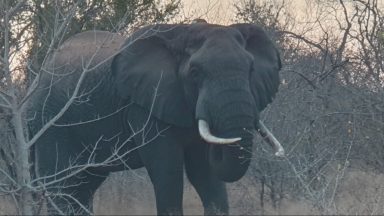Species diversity is often cited as the best measure of the health of an ecosystem. So, seeing these guinea fowl and giraffe together is a great sign for Limpopo National Park. This species of guinea fowl lives in grassland or savanna and it is not uncommon for these birds to follow large animals, like these giraffe, in order to hunt the insects that are flushed out with their movement; small invertebrates like spiders and beetles. Some species even eat ticks, helping to prevent the spread of diseases like Lyme disease.
This is a classic example of why biodiversity matters. Biodiversity describes the degree of variation of life forms and is fundamental to life on Earth because the health of the land and the lives in it are intertwined, each species playing a specific role in keeping the ecosystem healthy. So, the guinea fowl are no less important than the giraffe, or the ticks for that matter!
There is often an explanation for why you see different species together. Wildebeest like to hang around with zebra, for example, because their skills for survival complement each other. Wildebeest, graze on short grasses whereas Zebra eat the long grass. So, zebra prepare the ground for the wildebeest, and the two species are never in competition for food. Some say that wildebeest also travel alongside zebra because zebra remember the previous year’s migration routes, whereas wildebeest do not. However, wildebeest are natural water diviners, enabling then to detect water even when the savannah seems dry, so this can help the zebra during the dry season. Ultimately, the two species are brought together by shared needs and circumstances.
In the same way the puku and impala happily coexist as they are not in fierce competition with each other for food or habitat.
So, biodiversity is vital for a healthy ecosystem, and this principle is at the heart of the Peace Parks’ strategy for re-establishing and rewilding the parks and transfrontier conservation areas.

